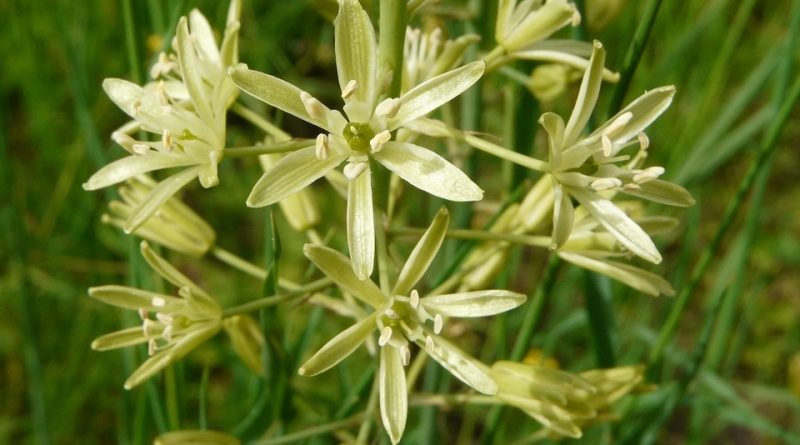Loncomelos pyrenaicus
Loncomelos pyrenaicus
Wild asparagus (Loncomelos pyrenaicus (L.) L.D. Hrouda) is a herbaceous species belonging to the Liliaceae family.
Systematic –
From a systematic point of view, it belongs to the Eukaryota Domain, Plantae Kingdom, Tracheobionta Subregion, Magnoliophyta Division, Liliopsida Class, Liliidae Subclass, Liliales Order, Liliaceae Family and therefore to the Genus Ornithogalum and to the Species O. pyrenaicum.
Among the main synonyms we mention the terms:
– Ornithogalum pyrenaicum L .;
– Ornithogalum flavescens Lam .;
– Loncomelos pyrenaicum (L.) Hrouda ex Holub.
Etymology –
The term Loncomelos comes from the Greek λογχη lonchè spear and from μέλος melos melody, tone and, by extension, trend: with a bearing that resembles that of a spear.
The specific epithet pyrenaicus refers to the Pyrenees, a mountain range that divides Spain from France.
Geographical Distribution and Habitat –
Loncomelos pyrenaicus is a plant present throughout Italy, except in Sicily, and its habitat is that of scrub, bushes and uncultivated areas where it prefers moist soils and at an altitude range between 0 and 1500 meters above sea level.
Description –
Wild asparagus is a herbaceous, geophyte, bulbous, glabrous, 30-80 cm., With elongated bulb with whitish tunics.
The scape is cylindrical, erect and green in color.
The leaves are all basal, which wither on flowering, linear grooved, 20-40 cm long.
The flowers are pedunculated, with peduncles of about 3 cm, with a shorter basal membranous bract, in an elongated raceme of 20-50 elements, non-conniving tepals, greenish or yellowish with a green strip on the back, carried in an ear that opens revealing flowers yellowish-white hermaphrodites.
The antesis is between May and July.
The fruit is a loculicidal capsule of 8-9 x 5.5-6.5 mm, cylindrical ovate, with a trigonal cross section with rounded corners, three-lobed.
The seeds are 10-18 per capsule, 2.5-3.1 x 1.6-2 mm, brownish-blackish, angular and irregularly compressed, with a wrinkled and minutely cross-linked head.
Cultivation –
Loncomelos pyrenaicus is a plant that propagates by seed or by separating the bulbils from the mother bulb.
It grows spontaneously in humid places which it also prefers for its cultivation.
Uses and Traditions –
Wild asparagus, although belonging to a genus that boasts numerous somewhat toxic varieties, is an edible plant.
In some areas the young and tender shoots of the plant are collected to use them in the same way as wild asparagus.
In any case, unlike wild asparagus, decidedly bitter, the shoots of this plant have a more pleasant taste.
Instead, the pharmaceutical properties of this plant are unknown.
Method of Preparation –
Wild asparagus is used in cooking where young shoots are excellent if consumed like asparagus.
The flower stems are boiled and consumed as the most common cultivated asparagus and can also be preserved in vinegar.
Among the various preparations they can be used, after being boiled, in risotto and omelettes, or seasoned with garlic and oil.
Guido Bissanti
Sources
– Acta Plantarum – Flora of the Italian Regions.
– Wikipedia, the free encyclopedia.
– Treben M., 2000. Health from the Lord’s Pharmacy, Tips and experiences with medicinal herbs, Ennsthaler Editore
– Pignatti S., 1982. Flora of Italy, Edagricole, Bologna.
– Conti F., Abbate G., Alessandrini A., Blasi C. (edited by), 2005. An annotated checklist of the Italian vascular flora, Palombi Editore.
Warning: Pharmaceutical applications and alimurgical uses are indicated for information purposes only, they do not in any way represent a medical prescription; therefore, no responsibility is accepted for their use for healing, aesthetic or food purposes.


